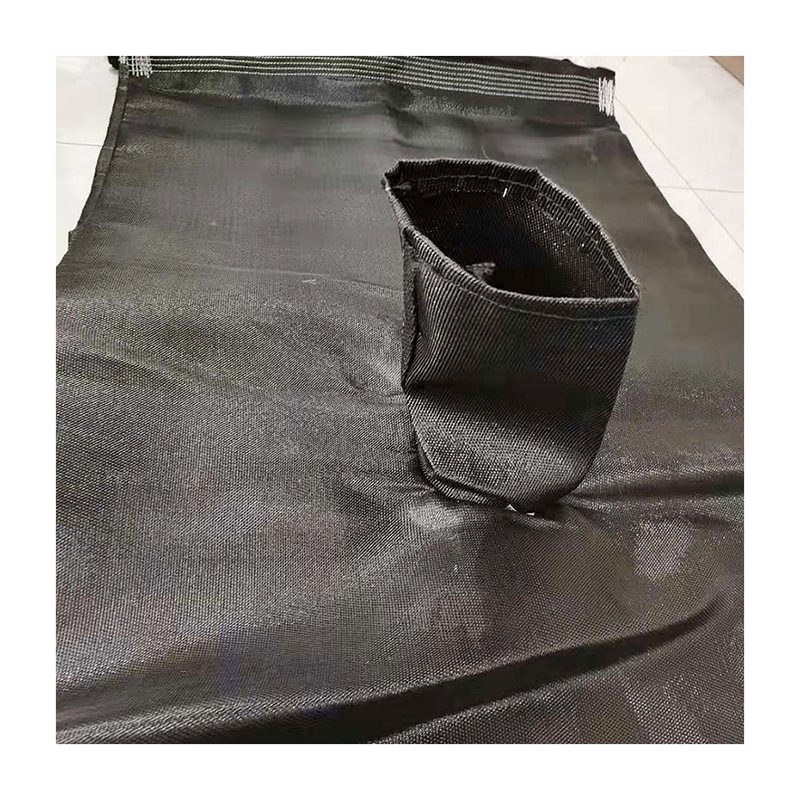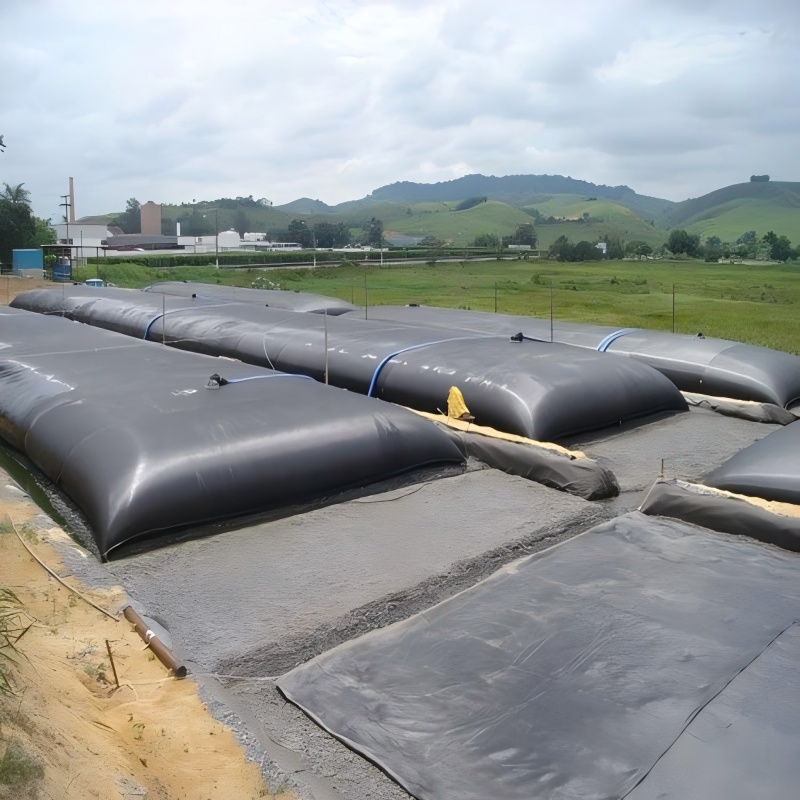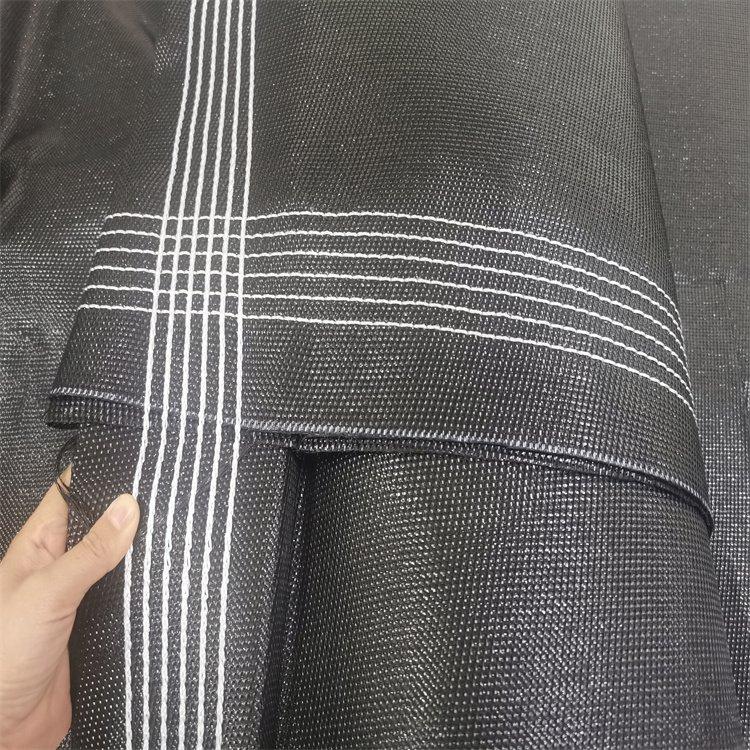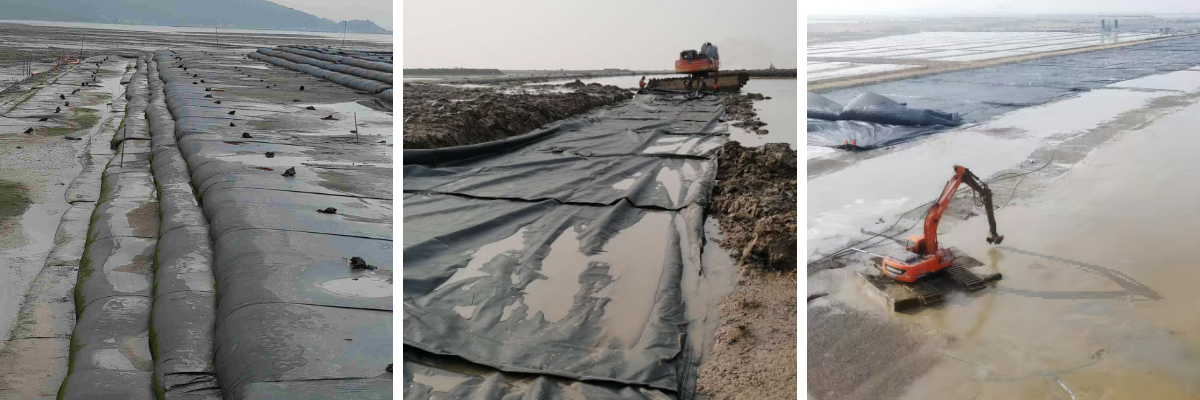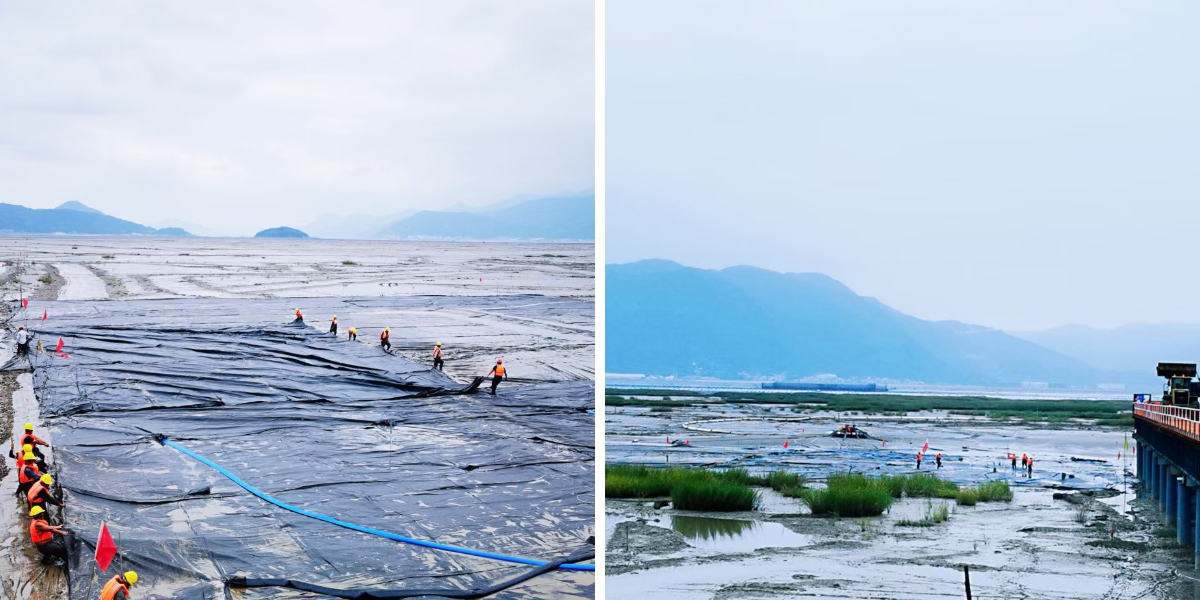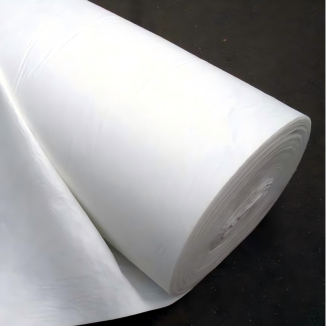Dewatering Silt Bags
1. Fast and efficient dehydration: The special fabric pores are permeable and can intercept mud, and the sewage containing mud can be dehydrated in 3-7 days, reducing the moisture content to below 60%, which is 3-5 times faster than natural drying and greatly shortens the construction period.
2. Environmental protection without secondary pollution: Pure physical filtration, no need to add chemical agents, avoiding soil and water pollution. After dehydration, the dry mud can also be reused as a resource (such as improving soil).
3. Durable and easy to operate: High strength materials are wear-resistant and stretch resistant, and can be stacked with 3-5 layers of silt that are not easily broken.
4. More cost-effective: The initial investment is 50% lower than that of dehydration equipment, and it can be reused 2-3 times, reducing the cost of solid waste transportation and disposal, and providing higher cost-effectiveness for long-term use.
Products Introduction:
Dewatering Silk Bags are functional geotechnical containers designed specifically for mud water separation and sludge drying. They are made from high-strength polypropylene (PP) or polyester (PET) geotextiles and are sewn into bag like structures. Some products are coated with anti UV and anti corrosion coatings as needed. The core principle is to utilize the water permeable and mud impermeable properties of fabrics. After the mud containing sewage is pumped into the bag, the water naturally seeps out through the pores of the bag or is discharged under pressure. Solid particles such as sludge are trapped in the bag, achieving rapid dehydration and drying. This product does not require complex equipment and is suitable for scenarios such as river dredging, engineering mud treatment, and mine tailings disposal. It can significantly reduce the moisture content of sludge, reduce the cost of solid waste transportation and disposal, and is a key equipment for environmentally friendly mud water separation projects.
Product Features:
1. Efficient mud water separation and fast dehydration speed: The bag fabric adopts special weaving or needle punching technology, with precise pore control of 0.1-0.5mm, which can quickly intercept silt particles (with a retention rate of over 95% for silt particles with a particle size ≥ 0.02mm) and allow water to smoothly seep out. Under normal operating conditions, 1 cubic meter of sludge containing sewage (with a moisture content of over 95%) can be dehydrated within 3-7 days, reducing the moisture content of the sludge to below 60%. Compared to traditional natural drying, the dehydration efficiency is increased by 3-5 times, significantly shortening the project duration.
2. High strength and wear resistance, strong bearing capacity: Geotextiles with a fracture strength of ≥ 20kN/m are selected, and the seams of the bag body are reinforced with double line sewing or heat sealing technology, which has excellent tear and tensile resistance. After being fully filled with silt (with a single bag capacity of 1-20 cubic meters), it can withstand its own weight and stacking pressure (allowing 3-5 layers of stacking), and is not prone to cracking or leakage; At the same time, it is acid and alkali resistant, anti-aging, and can be used in the sludge environment containing heavy metals and chemical residues, with a service life of 1-3 years (can be reused for 2-3 times).
3. Easy and flexible operation, suitable for multiple scenarios: lightweight bag design (empty bag weight only 1-5kg), foldable storage, convenient transportation and laying; Equipped with dedicated feed inlet and exhaust valve, the dehydration operation can be started by connecting the mud pump without the need for professional technicians to operate. There are various sizes and specifications (from small bags of 1m x 1m to large bags of 5m x 10m), which can be flexibly selected according to the project scale (such as small pond dredging, large river channel management), and are suitable for different working environments such as land, water, and shallow water areas.
4. Environmental protection, no secondary pollution, low cost: The entire dehydration process is based on physical filtration, without the need to add chemical agents such as flocculants and dehydrators, avoiding chemical residue pollution of soil and water bodies; Dehydrated and dried sludge can be utilized as a resource (such as improving soil and making bricks), reducing the amount of solid waste landfill; Compared to dehydration equipment such as plate and frame filter presses and centrifuges, the initial investment cost is more than 50% lower, and there is no electricity consumption, making long-term use more economical.
Product Parameters:
project | unit | CWGD50S | CWGD90/120 | CWGD90S | CWGD100S | CWGD120S-B | CWGD120S-C | CWGD130S | CWGD200S-C | |
Tensile strength-radial | kN/m | 55 | 90 | 90 | 100 | 130 | 130 | 130 | 220 | |
Tensile strength-Weft | 50 | 120 | 90 | 100 | 120 | 120 | 130 | 210 | ||
Strain elongation-radial | % | 16±1 | 12±1 | 9±1 | 10±1 | 10±1 | 10±1 | 10±1 | 12±1 | |
Extensional elongation-Weft | 10±1 | 8±1 | 8±1 | 8±1 | 8±1 | 8±1 | 8±1 | 8±1 | ||
Breakage strength at 2% elongation | warp direction | kN/m | 5/15 | 14/40 | 30/30 | 30/30 | 20/40 | 22/40 | 20/45 | 15 |
Breakage strength at 5% elongation | warp direction | kN/m | 14/33 | 38/90 | 75/75 | 75/75 | 80/100 | 84/40 | 80/110 | 90 |
mass area ratio | g/m² | 285 | 440 | 390 | 430 | 540 | 540 | 560 | 850 | |
Joint tensile strength | kN/m | 35 | 90 | 60 | 70 | 100 | 100 | 110 | 170 | |
Static Burst Strength (CBR) | KN | 5 | 10 | 10 | 13 | 15 | 15 | 16 | 22 | |
Dynamic perforation | mm | 10 | 8 | 12 | 12 | 10 | 10 | 11 | 8 | |
Equivalent aperture (0g0) | mm | 0.9 | 0.48 | 0.52 | 0.45 | 0.4 | 0.3 | 0.43 | 0.4 | |
Permeability (Q50) | L/m²/s | 200 | 40 | 20 | 15 | 12 | 6.5 | 15 | 15 | |
Ultraviolet resistance (500h strong storage rate ) | % | 90 | 90 | 85 | 85 | 85 | 85 | 85 | 85 | |
Product Applications:
1. River and Lake Dredging Project: In the dredging operations of urban inland rivers, scenic lakes, and reservoirs, the slurry mixture excavated by dredging ships is pumped into dewatering bags to quickly separate water and silt. The dried sludge can be directly transported for treatment, and the leaked clean water can be filtered and returned to the water body to avoid the spread of mud and water during the dredging process, which is suitable for the treatment of ecologically sensitive water bodies.
2. Construction and Engineering Mud Treatment: The engineering mud (with a moisture content of over 90%) generated during construction pile driving, tunnel excavation, and road construction can be dehydrated through dewatering bags, and the dry mud can be transported for disposal or resource utilization. After the water seepage meets the standard, it can be recycled for construction or discharge, solving the problem of "difficult transportation and expensive disposal" of engineering mud and reducing the impact of construction on the surrounding environment.
3. Disposal of tailings from mines and quarries: Tailings (containing heavy metals or dust) generated from metal and non-metal mining can be dehydrated and dried using dewatering bags, which can reduce the footprint of tailings storage and lower the risk of tailings landslides and leaks; At the same time, it is necessary to prevent harmful substances in the tailings from spreading with rainwater, protect the surrounding soil and groundwater environment, and adapt to mining ecological restoration projects.
4. Treatment of agricultural and aquaculture wastewater: Mud containing wastewater generated from irrigation wastewater and aquaculture pond dredging in farmland can be filtered and dehydrated through dewatering bags to recover clean water for irrigation or aquaculture. The intercepted sludge is rich in organic matter and can be used as farmland fertilizer for recycling, achieving "wastewater resource utilization and sludge reduction" and meeting the needs of green agricultural development.
Dewatering Silk Bags takes "efficient dehydration, high strength and durability, convenient and environmentally friendly, and cost-effective" as its core advantages, accurately solving the pain points of "low efficiency, high pollution, and high cost" in sludge water separation engineering. Whether it's ecological dredging of rivers and lakes, industrial mud treatment in construction and mining, or wastewater resource utilization in agriculture, it can achieve rapid separation of mud and water through physical filtration, reducing secondary pollution and lowering project costs. As an environmentally friendly dehydration equipment, this product balances functionality and sustainability, providing efficient solutions for various mud and water treatment projects without complex operations or high investment. It is an ideal choice for promoting the "green and low-cost" development of dredging and mud treatment projects.


